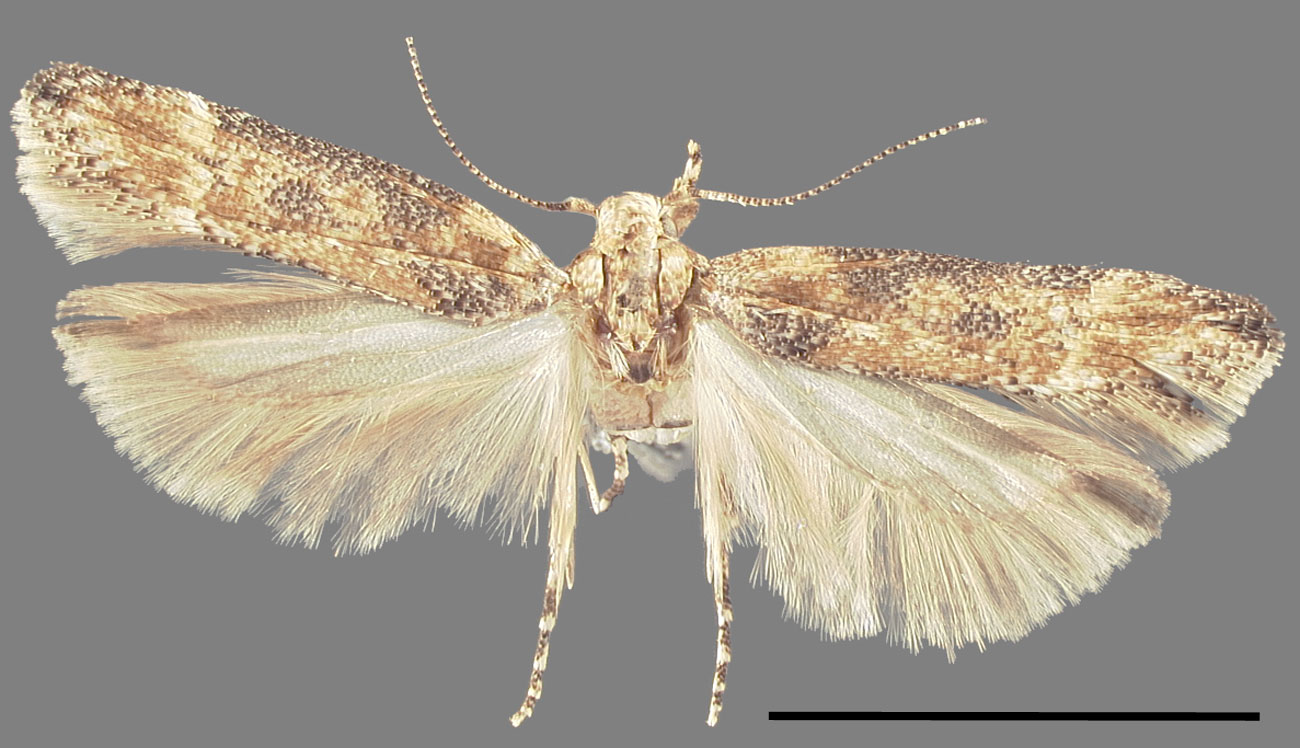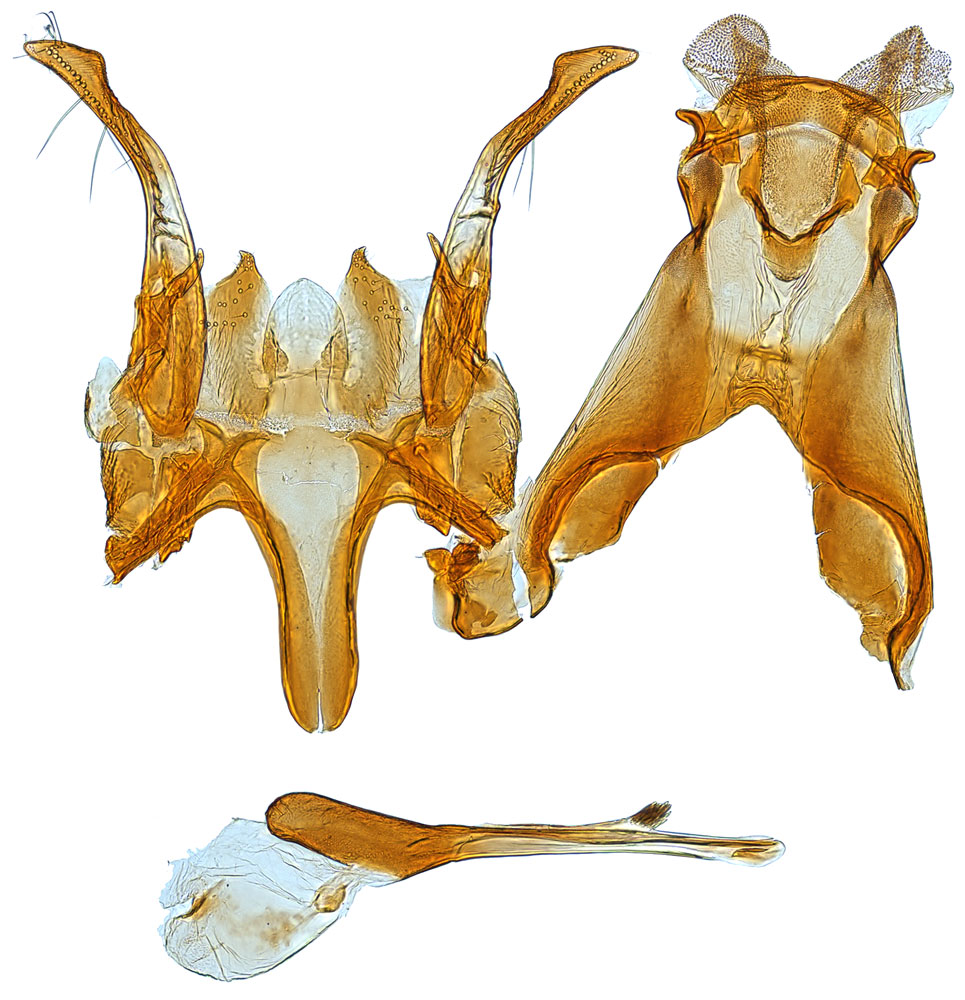Symmetrischema kendallorum
|
Symmetrischema kendallorum male habitus. Scale = 5 mm. |
|
Symmetrischema kendallorum female habitus. Scale = 5 mm. |
|
Symmetrischema kendallorum head. |
|
Symmetrischema kendallorum male genitalia. |
|
Symmetrischema kendallorum female genitalia. |
Name
Symmetrischema kendallorum Blanchard & Knudson, 1982
Common names: none
Original combination: Symmetrischema kendallorum Blanchard & Knudson, 1982
Synonyms: none
Classification: Gelechioidea: Gelechiidae: Gelechiinae: Gnorimoschemini
Adult recognition
Adults are about 4.2–5.5 mm in forewing length. They are yellowish orange, with a grayish black patch extending along the costal margin and a grayish black patch near the base. The labial palpusLabial palpus:
The more prominent, elongate pair of appendages on the head, usually three-segmented (pl. palpi).
-800px.jpg) is upturned. The hindwing is light yellowish orange without hair-pencils in males. The male genitalia have a hood-shaped uncusUncus:
is upturned. The hindwing is light yellowish orange without hair-pencils in males. The male genitalia have a hood-shaped uncusUncus:
The prominent projection from the dorsal tegumen of the male genitalia. May be variously shaped as a hook, knob, hood, etc.
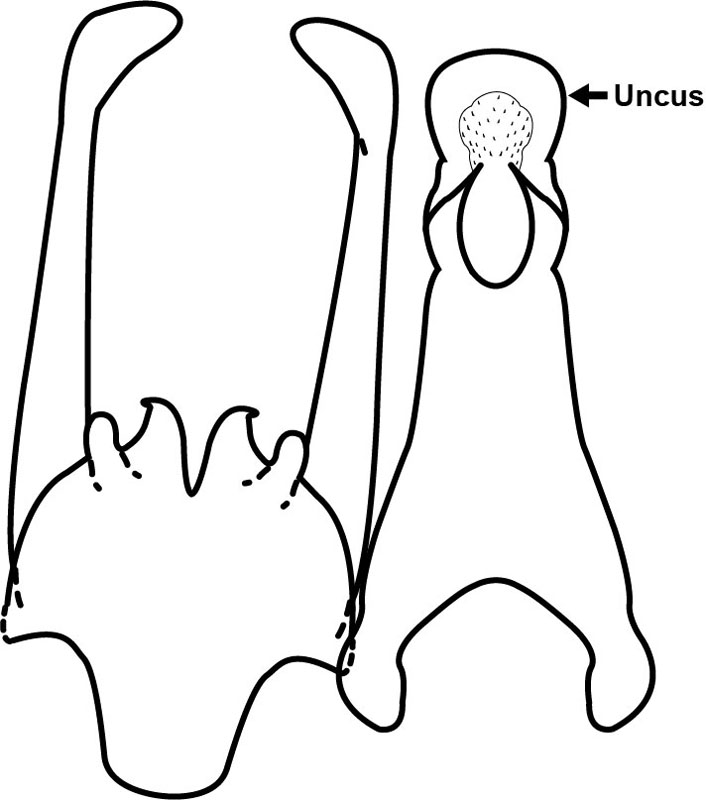 with small lateral stubs, culcitulaCulcitula:
with small lateral stubs, culcitulaCulcitula:
A membranous spiny cushion at the base of the gnathos and the uncus.
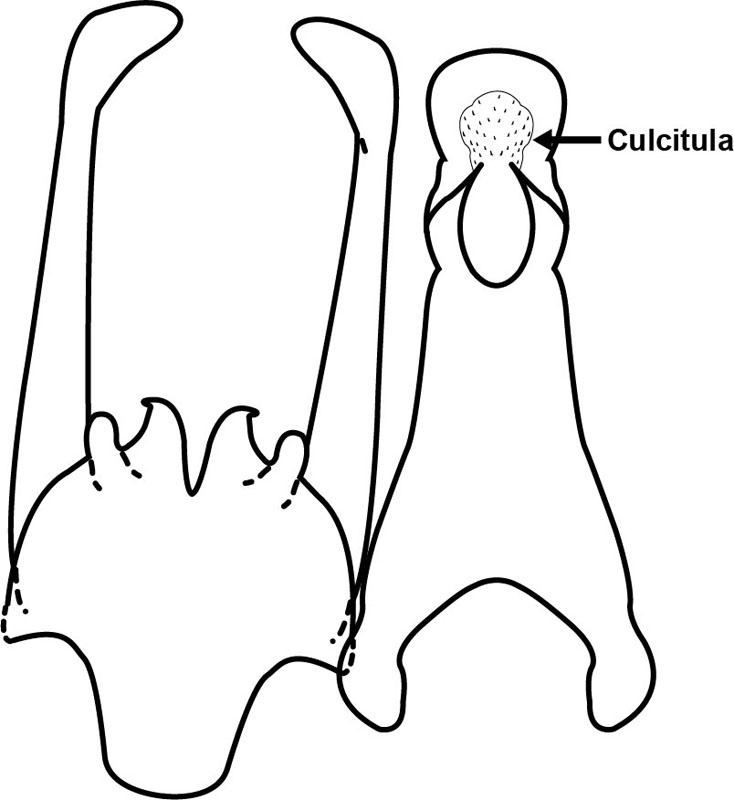 transversely extended and lobed past the sides of the uncusUncus:
transversely extended and lobed past the sides of the uncusUncus:
The prominent projection from the dorsal tegumen of the male genitalia. May be variously shaped as a hook, knob, hood, etc.
 , a tongue-shaped gnathosGnathos:
, a tongue-shaped gnathosGnathos:
A variously shaped bridge-like structure, usually hooked or bowed, crossing the tegumen below the uncus.
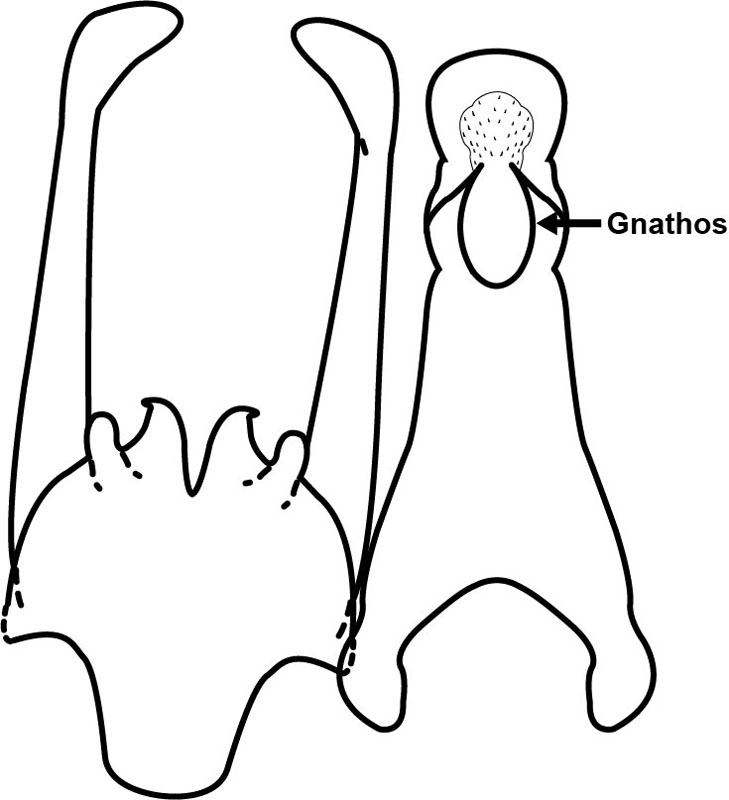 , elongate valvae with triangular-shaped apices, and a phallusPhallus:
, elongate valvae with triangular-shaped apices, and a phallusPhallus:
The intromittent part of the male genitalia, also known as the aedeagus.
 with a short lateral process tipped with numerous fine spines. Females have a suboval-shaped antrumAntrum:
with a short lateral process tipped with numerous fine spines. Females have a suboval-shaped antrumAntrum:
Posterior section of the ductus bursae, posterior of the colliculum.
 and no signumSignum:
and no signumSignum:
Any sclerite, sclerotized area, or discrete granular area on the wall of the corpus bursae (pl. signa).
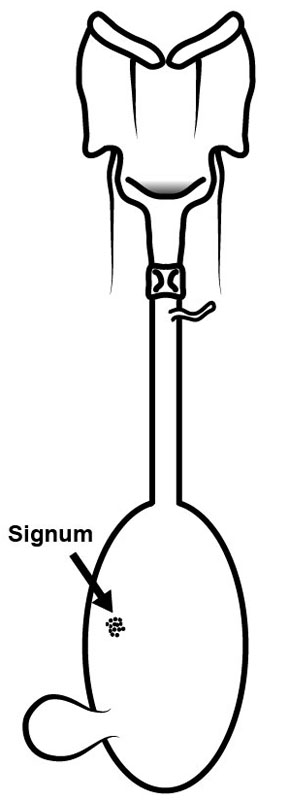 .
.
Immature stages
The morphology is not described.
Similar species
This species is superficially similar to Symmetrischema pallidochrella (Chambers); however, it can be differentiated by the forewing with a row of grayish-black scales extending along dorsal margin, broadening to form a grayish-black patch near base, and the male phallusPhallus:
The intromittent part of the male genitalia, also known as the aedeagus.
 with a short lateral process tipped with numerous fine spines.
with a short lateral process tipped with numerous fine spines.
This is the only species of gelechiid we include that primarily feeds on Physalis, but there are several other gelechiids associated with this plant in the New World. The excluded species have unknown larvae or do not resemble our target pests in size or wing pattern.
Behavior
Larvae and pupae are reported in galls on upper stems of host-plant (Blanchard & Knudson, 1982).
Distribution
Native to North America. USA (Texas).
Hosts
Physalis virginiana Mill. var. spathulaefolia (Torr.)
Comments
This species is a small moth discovered from rearing larvae and pupae in the host-plant, but the larva and pupa were not described at that time.
Literature
Blanchard and Knudson 1982Blanchard and Knudson 1982:
Blanchard A and Knudson EC. 1982. A new species of Symmetrischema Povolnyacute; (Lepidoptera: Gelechiidae) from Texas. Proceedings of the Entomological Society of Washington 84: 628-631.


